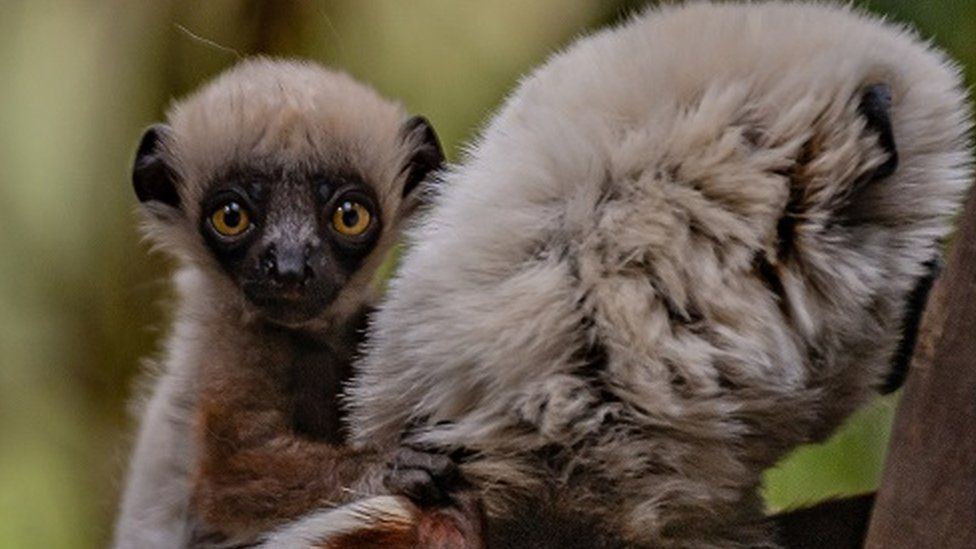Dancing lemur: First Coquerel's sifaka born in Europe
- Published
- comments

There are more than 100 species of lemur
The first of a rare species of lemur - called Coquerel's sifaka - has been born in Europe.
They are often called 'dancing lemurs' because of the unique way they move - upright, on their back legs and springing side to side!
It was born on 19 December 2022 at Chester Zoo as part of a conservation programme to protect the critically endangered species.
Conservationists say the birth is a "landmark moment".
What does critically endangered mean?
Critically endangered means a species is at an extremely high risk of becoming extinct in the wild
The baby's parents, Beatrice and Elliot, arrived at the zoo 18 months ago from the US.
Experts say it will cling onto mum Beatrice's belly for several weeks before it starts to ride on her back until it's around six months old.
Zookeepers won't be able to tell the sex of the primate until it starts to explore on its own.
But they say it won't be long until its bouncing from tree to tree like its parents!
The new arrival was born with a thick fuzzy white coat and weighed just 119 grams
How rare are 'dancing lemurs'?
There are only seven of the primates in three zoos in Europe, and the family in Chester are the only ones in the UK.
In the wild they are only found in the treetops of northwest Madagascar.
The population there has fallen by 80% in 30 years because of deforestation.
Mike Jordan, who is in charge of animals and plants at Chester Zoo, says he thinks the birth at the zoo "could be the lifeboat that prevents them from being wiped out completely".
The baby is one of seven of the species of lemur in Europe
'Dancing lemur' facts
They are normally 60cm tall and weigh around 4kg
They can leap more than six metres in one jump
They are only found in Madagascar in the wild
- Published26 October 2021
- Published5 February 2023
- Published10 July 2020
